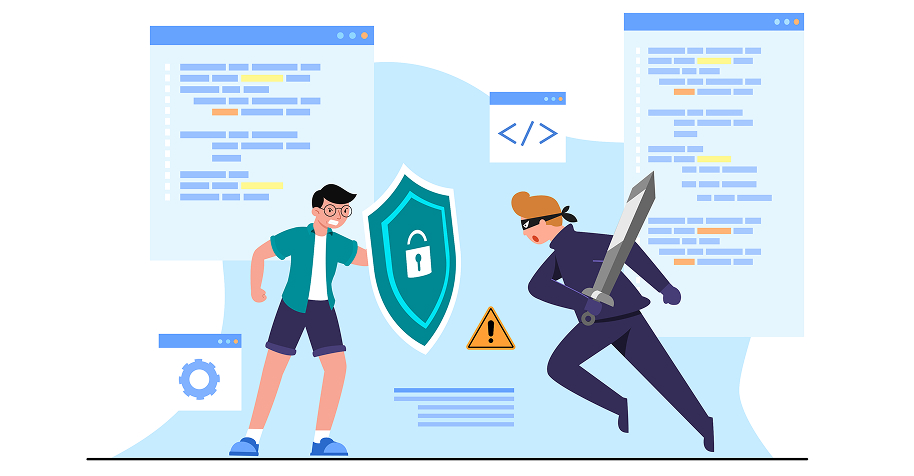
Application security refers to the strategies, tools, and practices used to protect software from unauthorized access, data breaches, and other threats throughout the development lifecycle. It involves both preventive and detective controls—from secure coding and encryption to continuous monitoring and patching.
In today’s environment of increasing digital risk and complex tech stacks, understanding what is application security and why is it important is essential. Security isn’t just a compliance checkbox; it’s a foundational requirement for user trust, business continuity, and protecting sensitive data.
Application vulnerabilities can be exploited at any stage, from insecure APIs to client-side errors. Tools like bug replay by Bugsee help teams detect abnormal app behavior, reproduce security issues in real time, and respond before real damage occurs.
Strong application security testing practices paired with proactive risk management can reduce costly downtime, avoid regulatory penalties, and protect your reputation, making it a business-critical investment for any software team.
What Is Security Testing in Software Development
Security testing in software development refers to the process of identifying vulnerabilities, weaknesses, and misconfigurations in applications that could be exploited by attackers. It ensures that software meets defined security requirements and defends against threats such as data leaks, unauthorized access, and injection attacks.
There are two closely related but distinct terms often used: Application Security Testing (AST) and Software Security Testing (SST).
- Application Security Testing (AST) focuses on securing the application layer, everything users interact with. This includes testing for input validation, authentication flaws, session management, and business logic vulnerabilities.
- Software Security Testing (SST) takes a broader view. It includes AST but also covers lower-level components like libraries, APIs, infrastructure, and system integrations. SST often applies to IT security testing beyond just the application surface.
Comparison: AST vs SST in Security Testing
| Feature | Application Security Testing (AST) | Software Security Testing (SST) |
|---|---|---|
| Focus Area | Application-level (UI, APIs, logic) | Entire software stack (apps, libraries, infra) |
| Tools Used | SAST, DAST, IAST, cloud application security testing | SAST, DAST, container scans, infra audits |
| Scope | Web/mobile app vulnerabilities | Broader IT ecosystem risks |
| Primary Goal | Ensure secure functionality of apps | Ensure secure behavior of all software layers |
| Common Use Cases | Web forms, auth systems, business logic | CI/CD pipeline, third-party risks |
In practice, most development teams prioritize application security testing methods such as static and dynamic application security testing (SAST and DAST), penetration tests, and cloud application security testing to catch issues early and reduce risk across environments.
Whether your focus is on front-end bugs or full-stack exposures, a strong security testing strategy is essential for robust software application security.
Types of Application Security Testing You Should Know
Modern development requires more than just building fast; it demands building securely. Understanding the types of application security testing helps teams identify vulnerabilities early, maintain compliance, and protect sensitive data. Below are the key types of security testing used in today’s software pipelines.
Static and Dynamic Application Security Testing
Static Application Security Testing (SAST) analyzes source code before the app runs. It’s best used early in the development cycle, helping detect logic flaws, injection points, or insecure coding patterns before deployment.
Dynamic Application Security Testing (DAST), in contrast, analyzes a running application. It simulates attacks to find runtime vulnerabilities like broken authentication or insecure APIs.
Use SAST during development for early detection, and DAST in staging or production for broader vulnerability coverage. Together, these form the foundation of robust application security testing.
Software Composition Analysis (SCA)
SCA scans third-party libraries and frameworks for known vulnerabilities, license violations, and supply chain risks. With open-source software being a critical part of most applications, this testing is essential for software application security and ensuring ongoing compliance.
Secret Scanning
This test searches codebases for accidentally committed secrets, like API keys, hardcoded credentials, or tokens. Early secret scanning prevents data breaches caused by leaked access credentials, often targeted in attacks.
Manual Penetration Testing
While automated tools are powerful, manual penetration testing brings a human perspective. Security experts simulate real-world attacks that tools might miss especially in complex logic flows or custom integrations, making this step vital for comprehensive IT security testing.
Runtime Application Self-Protection (RASP)
RASP monitors app behavior in real-time and actively blocks threats as they occur. It integrates with the runtime environment, providing immediate responses to attacks like SQL injection or XSS. This adds an extra layer of defense beyond traditional testing.
Interactive Application Security Testing (IAST)
IAST combines the best of SAST and DAST, analyzing both source code and runtime behavior simultaneously. This hybrid application security approach enables deep, contextual vulnerability detection with lower false positives.
Compliance and Data Security Testing
This form of testing ensures your application complies with standards like GDPR, HIPAA, or PCI-DSS, while also safeguarding user and business data. It includes encryption validation, access control audits, and data security testing across the app lifecycle.
Specialized Application Security Assessments by Environment
Not all software runs in the same environment, so neither should your security approach. Different platforms introduce different risks, which is why modern teams perform application security assessments tailored to each context. Below are the most important environment-specific assessments you need to know.
Cloud Application Security Testing
Cloud application security testing focuses on misconfigurations, insecure identity setups, and vulnerabilities in infrastructure-as-code (IaC). Since cloud-native apps rely heavily on third-party services and automation, common issues include overly permissive IAM roles, unencrypted data storage, and exposed containers.
Effective testing should include:
- IaC scanning tools (e.g., Terraform/CloudFormation checks)
- Misconfiguration detection in S3 buckets, security groups, etc.
- Continuous monitoring of cloud-specific threats like SSRF or insecure metadata access
This is critical for securing modern SaaS products and achieving strong software application security in distributed architectures.
Mobile Application Security Testing
Mobile apps come with their own risks, especially around local storage, network traffic, and platform-specific flaws. Mobile application security testing typically includes:
- Checking for insecure data storage (e.g., sensitive info in plain text)
- Reverse engineering protection
- Certificate pinning validation
- Mobile malware and jailbreak/root detection
Given the widespread use of Android and iOS apps in finance, healthcare, and personal data management, these tests are essential to prevent breaches and ensure IT security testing covers all user endpoints.
API Security Testing
APIs power modern software ecosystems, but also expand the attack surface significantly. API security testing ensures endpoints are protected from issues like broken authentication, excessive data exposure, and injection flaws.
Key areas to test include:
- Authentication and authorization logic (e.g., OAuth, JWT validation)
- Rate limiting and abuse prevention
- Data leakage through verbose error messages or insecure response structures
Securing APIs is a core requirement for application security testing across all industries.
Best Practices for Application Security Assessments
Understanding the types of application security is only the first step. To make testing effective and scalable, organizations must adopt best practices that embed security throughout the development lifecycle.
1. Shift-Left Security in CI/CD
Security shouldn’t be a post-deployment checkpoint. Integrate application security testing directly into your CI/CD pipelines. This allows teams to catch and fix vulnerabilities early, reducing rework and improving delivery speed.
2. Combine Multiple Testing Methods
Relying on just SAST or DAST is not enough. Use a layered approach: mix static, dynamic, SCA, secret scanning, and manual assessments to cover different vulnerability classes across code, runtime, and dependencies.
3. Leverage ASPM Platforms
Application Security Posture Management (ASPM) platforms unify scanning tools, findings, and risk context into a single dashboard. This helps you prioritize issues more intelligently across environments like cloud, API, or mobile.
4. Prioritize Based on Risk, Not Just Severity
Not every “critical” issue is a showstopper. Use threat modeling and context-aware tools to rank findings based on real-world risk, business impact, and exploitability.
5. Continuously Monitor and Remediate
Security isn’t static. Set up continuous monitoring for misconfigurations, credential exposure, and runtime anomalies, especially in production environments where IT security testing often stops.
Final Thoughts: Combine Types of Application Security for Full Protection
Choosing one or two types of application security testing is a good start, but it’s not enough. Critical vulnerabilities often hide between layers, especially when environments like cloud or mobile are involved.
Security isn’t just about using the right tools, it’s about creating the right processes and culture. From shift-left testing to continuous monitoring, only a holistic and proactive approach can ensure your software application security strategy holds up in the real world.






